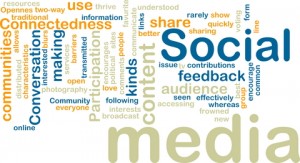 This post originally appeared on the Women in Consulting (WIC) blog. I thought it worthwhile to share with others contemplating social media that at the outset I didn’t embrace it. I was skeptical. I entered into it solely because it was necessary in my role as a communication consultant to understand all ways in which companies can engage their customers. How else could I guide them through the assessment process and help them make the best decision.
This post originally appeared on the Women in Consulting (WIC) blog. I thought it worthwhile to share with others contemplating social media that at the outset I didn’t embrace it. I was skeptical. I entered into it solely because it was necessary in my role as a communication consultant to understand all ways in which companies can engage their customers. How else could I guide them through the assessment process and help them make the best decision.
Without a doubt, every company should explore the various social media tools in light of their audience(s) and what’s important to them — just like you would any other communication tool. In fact, while speaking at a meeting for the International Association of Professional Administrators, a participant said she didn’t get Facebook pages and asked why she or her company should care. We were looking at DirecTV’s page at the time.
My response: It doesn’t matter if DirecTV (or your company) “gets” social media. What matters is 14,000+ fans do. If customers and prospects want to interact with you via social media, then it’s a mistake to ignore this channel because you don’t like it or “get” it. It really isn’t about you. It’s about them.
That doesn’t mean you should ignore all other channels in favor of social media. It just means you should explore social media as another channel that helps you communicate with your customers and prospects (more on this in another post).
On a side note: that presentation was a week ago, and DirecTV had 14,035. Today, DirecTV has 16,234 — more than a 15% increase in 1 week.
Original “Skeptic’s View of Social Media” Post
I must confess that I grudgingly signed up for many of the social media tools. They simply aren’t the way I prefer to communicate. At the same time, the entire phenomenon intrigues me. The reason for my simultaneous disinterest and intrigue in relation to social media can be traced back to my education and that which I love and love to study: communication.
I much prefer to speak to someone face to face and over the phone, or watch/hear someone express their views on TV or over the radio. I like the richness that those modes of communication provide, both in the nonverbal cues that accompany the words as well as the depth of information that they provide because they’re not limited to 140 characters or a screen page.
However, so much about social media gets my nerdy side operating in hyper drive. What is it about Facebook that has people spending endless time sharing brief snippets of their lives, taking quizzes, writing notes, and the like—and why should businesses care? Why is everyone chomping at the bit to express their thoughts in 140 characters or less on Twitter? And why have these become almost the standard for hooking up with friends—and now colleagues?
I am on Facebook. I do Tweet. I blog. And I am active on LinkedIn. However, as I mentioned, I went on Facebook and Twitter reluctantly. I needed to; I didn’t want to. As a consultant who helps companies develop and implement effective customer communication strategies, it’s my job to understand the various mechanisms by which users want to interact—and more and more users want to interact using social media.
Bottom line: it doesn’t matter if you like social media or not, if your audience does, you need to consider it — seriously.
You CANNOT Not Communicate — this is one of my favorite phrases. I even use it as my company tagline. It’s also a good reminder that everything you do — and don’t do — sends a message. If you write off social media because you’re not interested in it, then you likely risk alienating at least a portion of your audience. More importantly, you risk losing a pretty amazing opportunity to get to know your audience in a way that you might not otherwise be able to do.
And it’s this latter component that has this skeptic convinced that there’s value in exploring social media. In addition to giving your customers something they want and expect, you have the potential to gain incredible customer insight and see a side of them that might otherwise remain hidden. I didn’t think I would, but I did.

